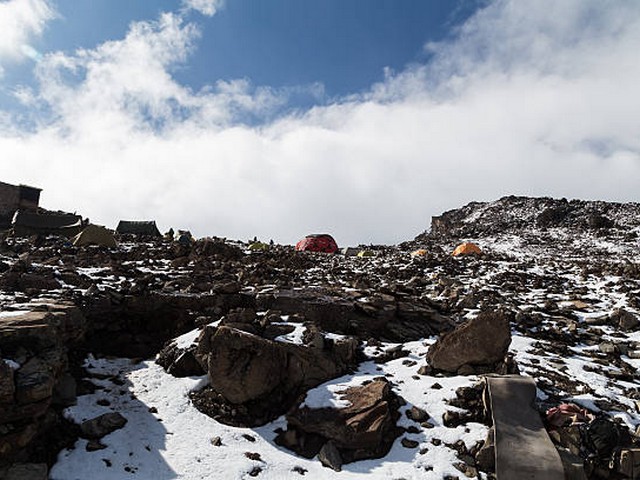Capture the Majestic Beauty of Kilimanjaro: Essential Photography Accessories for Your Climb
As you prepare for the adventure of a lifetime with Kilimanjaro Centre for Trekking and Ecotourism (KCTE), imagine capturing the breathtaking sunrise over the Mawenzi peak or the surreal beauty of the glaciers at the Roof of Africa. Bringing home these memories is priceless, and with the right photography accessories, you can immortalize your journey up Mount Kilimanjaro. Whether you’re a seasoned photographer or a passionate newbie, this guide will help you select the best photography accessories for Kilimanjaro climbs, ensuring you capture every awe-inspiring moment along your trek.
Why Photography on Kilimanjaro?
Mount Kilimanjaro isn’t just a mountain; it’s a mosaic of ecological systems, each with its own unique beauty. From lush rainforests and alpine deserts to the arctic summit, the diverse landscapes offer photographers a once-in-a-lifetime opportunity to capture a wide range of subjects in varying lights and settings. Bringing the right gear will help you not only document these incredible sights but also share your journey’s story with others.
Essential Photography Gear for Kilimanjaro
Cameras: Choosing the Best Fit
1. DSLR Cameras:
For the photography aficionado, a DSLR provides unparalleled control over images with adjustable settings for shutter speed, aperture, and ISO. Models like the Canon EOS 5D Mark IV are renowned for their robustness and high-quality image output, ideal for the diverse Kilimanjaro scenery.
2. Mirrorless Cameras:
A lighter alternative to DSLRs, mirrorless cameras such as the Sony Alpha series, offer similar image quality and customization, with the added advantage of being compact, making them perfect for the rigorous climb.
3. Action Cameras:
For those who want to capture the action hands-free, action cameras like the GoPro Hero series are perfect. They’re sturdy, waterproof, and can be mounted on gear, allowing you to record your climb without interruption.
Lenses: The Right Focal Length
Wide-Angle Lens:
A must-have to capture sweeping landscapes and vast skies. Lenses like the Nikon 10-24mm or Canon 10-18mm are excellent for stunning, expansive shots.
Telephoto Lens:
For wildlife and distant objects, a telephoto lens is indispensable. The 70-300mm lenses allow for detailed shots of distant wildlife or features on the mountain without disturbing the natural setting.
Prime Lens:
A lightweight option with superior sharpness, prime lenses, such as the 50mm f/1.8, are perfect for portraits and detailed shots of flora along the trail.
Tripods: Stability is Key
A lightweight, durable tripod is crucial for long exposure shots, especially in low light conditions at dawn or dusk. Models like the Manfrotto BeFree are designed for travel, offering stability without the bulk.
Filters: Enhancing Your Shots
UV Filters:
They protect your lens and reduce atmospheric haze, which is quite useful at high altitudes.
Polarizing Filters:
Enhance the vividness of the sky and reduce reflections off water bodies, making them perfect for capturing the varied terrain of Kilimanjaro.
Extra Batteries and Memory Cards
The cold on Kilimanjaro can drain batteries quickly. Pack extra batteries and memory cards to ensure you can shoot as much as you want without worrying about running out of power or space.
Carrying Your Gear: Backpacks and Cases
A weather-resistant camera backpack is vital to protect your gear from the elements. Look for options with padded compartments and easy access, so you don’t miss out on sudden shots.
Practical Tips for Photography on Kilimanjaro
1. Acclimatize and Plan Your Shots:
As you acclimatize to the altitude, plan your shots. Consider the best times for lighting, like early morning or late afternoon.
2. Keep Your Gear Accessible:
Keep your camera accessible but secure. Quick-access pockets in your backpack can save you time and hassle.
3. Protect Your Gear from Elements:
Always use lens caps and keep your equipment dry and clean. Moisture-absorbing silica gel packs can help prevent fungal growth on lenses.
Join Us at KCTE for an Unforgettable Photographic Journey!
At Kilimanjaro Centre for Trekking and Ecotourism (KCTE), we’re not just experts in climbing; we’re passionate about helping you capture the essence of Kilimanjaro. Our guides know the most picturesque routes and times when the light is just right for that perfect shot.
FAQ: Best Photography Accessories for Kilimanjaro Climbs
Q1: Can I rent photography equipment from KCTE?
A1: Yes, KCTE offers rental services for essential photography equipment. Contact us for more details on available gear.
Q2: How do I protect my camera from the cold on Kilimanjaro?
A2: Use insulated camera bags, keep batteries close to your body to preserve warmth, and never change lenses in dusty or windy conditions.
Q3: Are there any photography workshops available during the Kilimanjaro climb?
A3: Yes, KCTE periodically offers photography workshops aimed at enhancing your shooting skills in high-altitude conditions. Check our website for upcoming schedules.
Embark on your Kilimanjaro journey with us, and let Kilimanjaro Centre for Trekking and Ecotourism (KCTE) help you capture the towering peaks, majestic wildlife, and celestial skies through your lens. With the right preparation and gear, your photographic records of Kilimanjaro will be as breathtaking as the climb itself. Book your climb today and immortalize your adventure!




